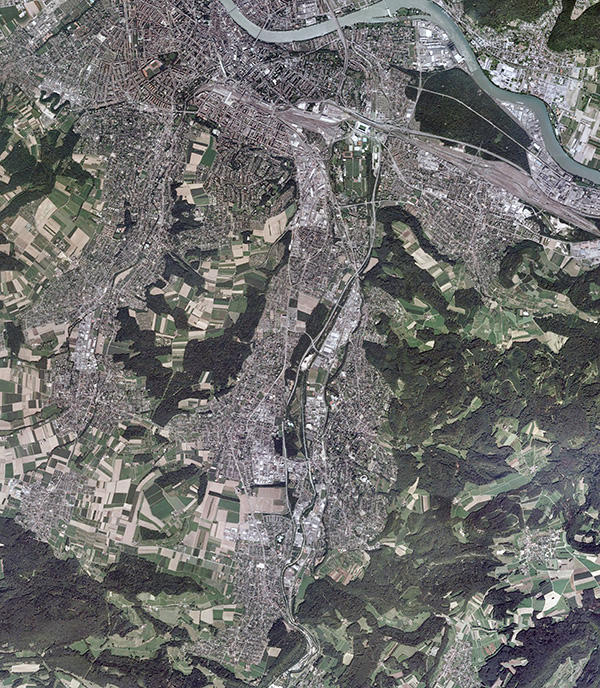3_The Suburban City

Site Birsstadt
Although Birsstadt has the dimension of a metropolis, the inhabitants of a mid-size city, it completely lacks any urban ambition. Stretching over the Birs river valley for more then ten kilometers, it is a clear representation of a sprawling development devoid of any urban structure. A sea of urbanization made of houses, factories and infrastructure has slowly erased the presence and legibility of the old and distinct seven communes located in this river valley. From the analysis conducted in the previous semester, Birsstadt, along with other similar sprawling development in Basel is responsible for a portion of energy consumption which is especially high in relation to the low values of densities of inhabitants, users and facilities. Although it is the site of several industrial plants, the large majority of the people currently living in Birsstadt are commuting to their workplace in the center of Basel or beyond. Conversely, factories here located attract workforce primarily from other districts of the city. A mobility that primarily relies on private car use is one of the main problems associated with energy consumption patterns.
Yet, its total lack of structure and its sprawling condition can also be seen as an opportunity for the (radical) transformation of such settlement into an urban form that would be able to limit its energy consumption. The low density of inhabitants associated to a low figure-ground land occupation can be seen as the opportunity to generally rethink and increase the densities of such settlement. Yet, it is clear that such a project cannot be detached by a wider ambition to transform this part of the city into a more legible and understandable (peripheral) urban form. In this sense, interventions at the scale of architecture cannot here be detached by a larger vision for the entire valley development that would be able to make this part of the city a clear and intelligible urban system. Being Birsstadt the outer edge of Basel, it is important to rethink its growth pattern and whether it would possible to limit its continuous outward tendency to occupy more land. As it has been pointed out in the research developed in the previous semester it is important to physically limit urban growth and yet accommodate the expected increase of population within the consolidated limits of the city. In this sense, landscape is here of extreme importance as it remains as one of the few remaining legible elements of the place and it could, if part of a project, become one of the structuring element of this development. Public transport – although a tramline already exists – should also be reinforced and its use facilitated in order to make Birsstadt as integrated part of the Metrobasel region. Weather a disperse city structured around a system of centralities linked and complementary among each other or a city based on a large public green core at its center (along the river Birs), viable strategies for the overall transformation of this territory have to be initially developed. Within such alternative visions, architectural and urban design interventions will be developed in order to test on specific sites the overall strategy. These interventions should tackle some of the rising issues associated to the Swiss sprawling conditions, namely the possibility of increase the density of inhabitants, to make this settlements more compact and rich of facilities, rethink the future of the single family house and the formation of a sustainable urban community without erasing or denying those aspects and conditions that have made this form of city successful in the last decades.
Student Project
Abigail Stoner, Hubert Holewik, Takashi Owada, Livio De Maria and Nicolas Rüegg

